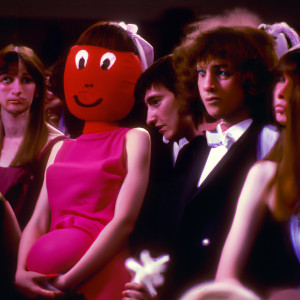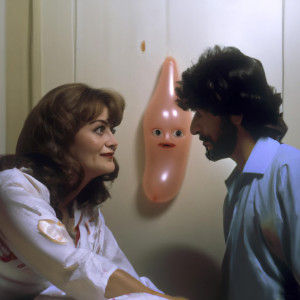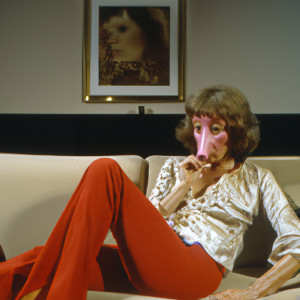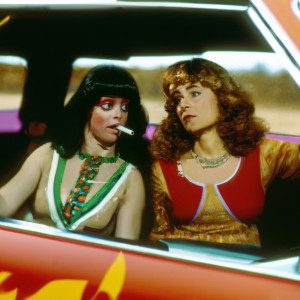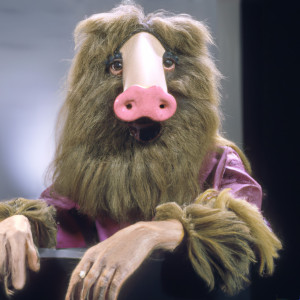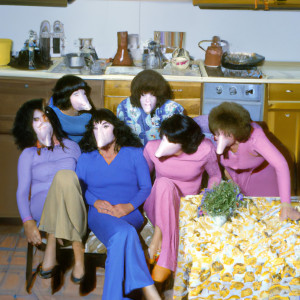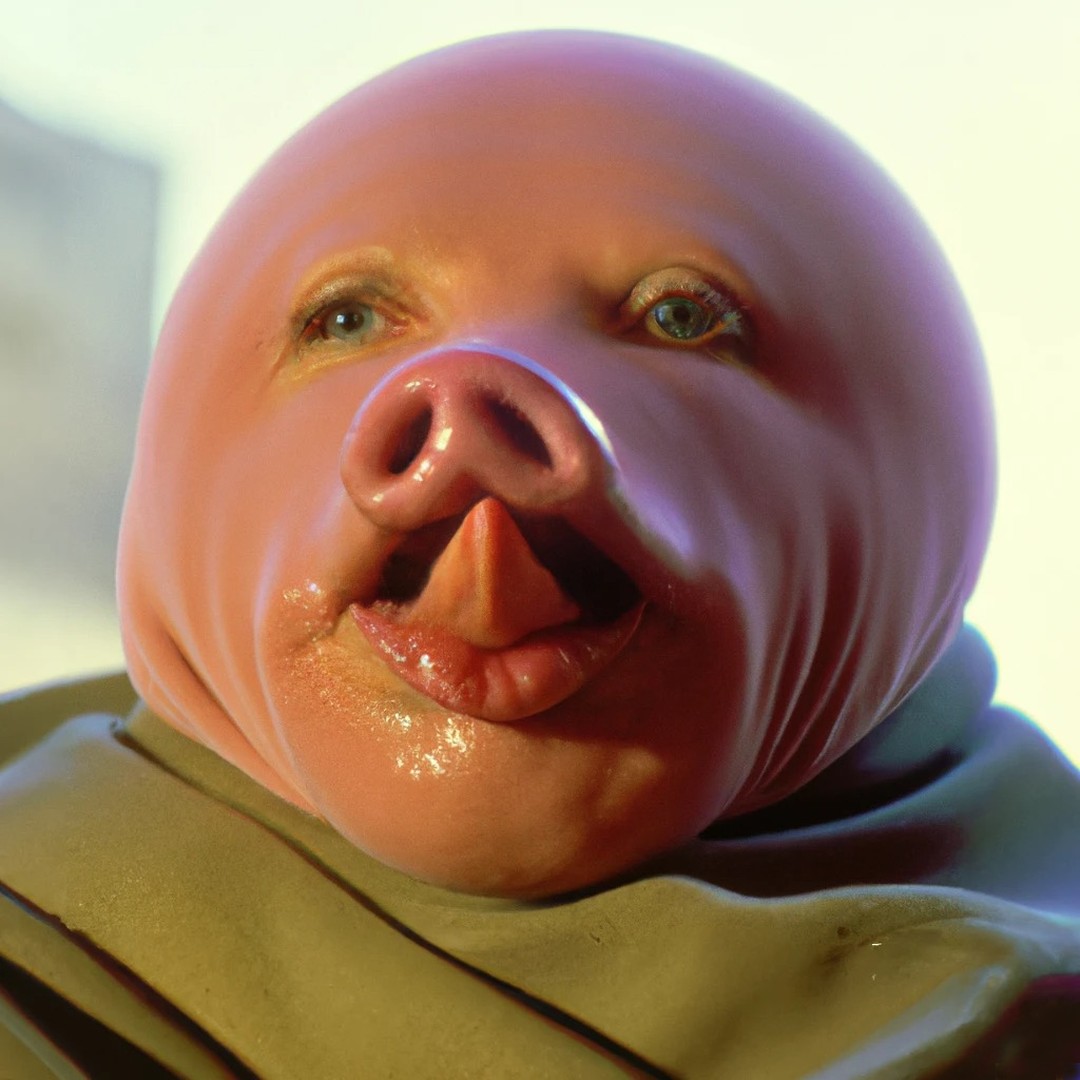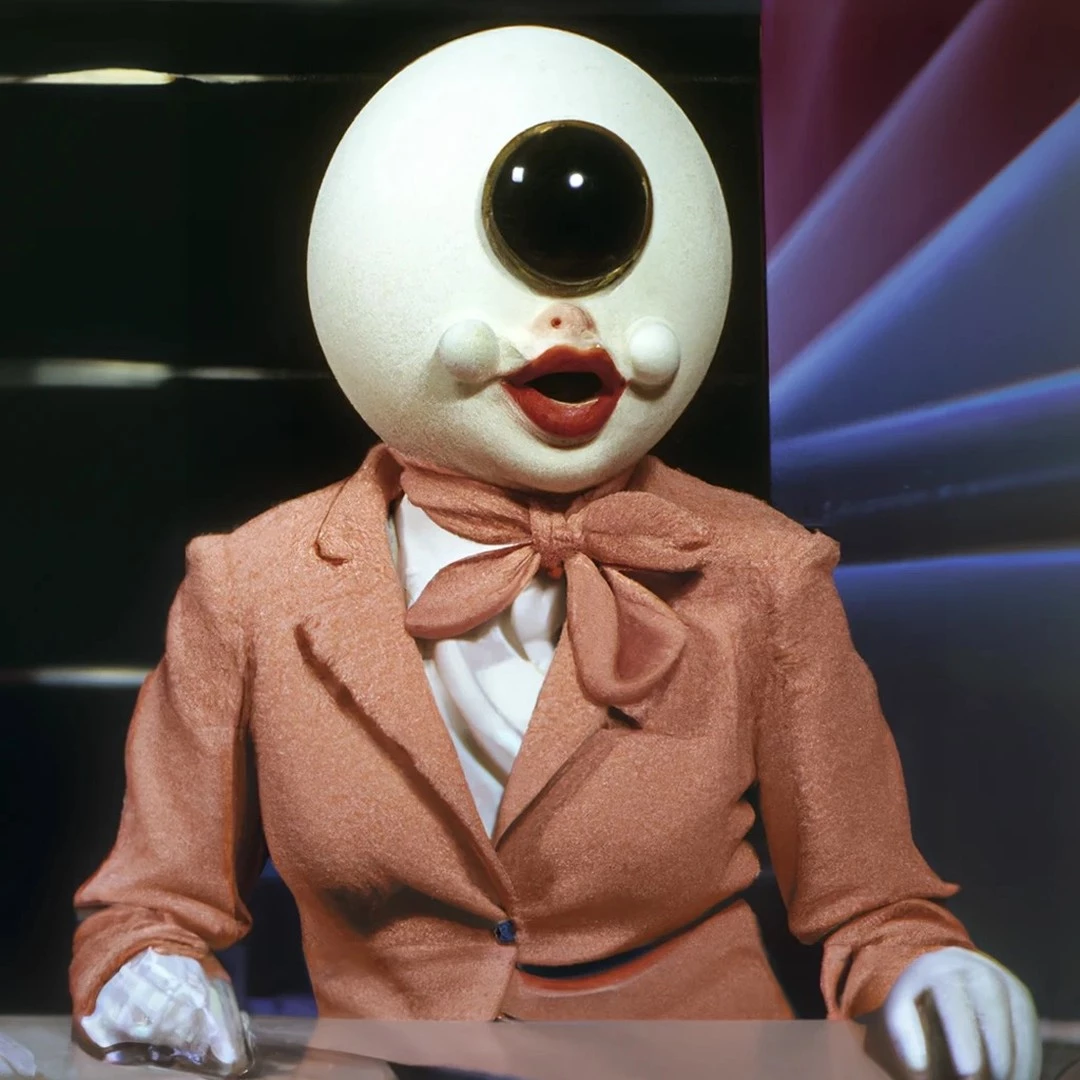
- Date
- 22 DECEMBER 2022
- Author
- DAVIDE ANDREATTA
- Image by
- BETH FREY
- Categories
- Aesthetics
Imperfect bodies, self-representation and AI as a line of flight. An interview with Beth Frey
Beth Frey (@bethisms) is a multimedia artist from Canada whose work spans across different formats. She graduated with an MFA in Painting and Drawing from Concordia University and a BFA from the University of Victoria.
Currently her focus has shifted towards AI generated images and with her account @sentientmuppetfactory she questions the way we approach issues such as gender, body representation, conformity and its subversion through technology. With their retro and grotesque atmosphere, her images possess a truly hauntological feeling.
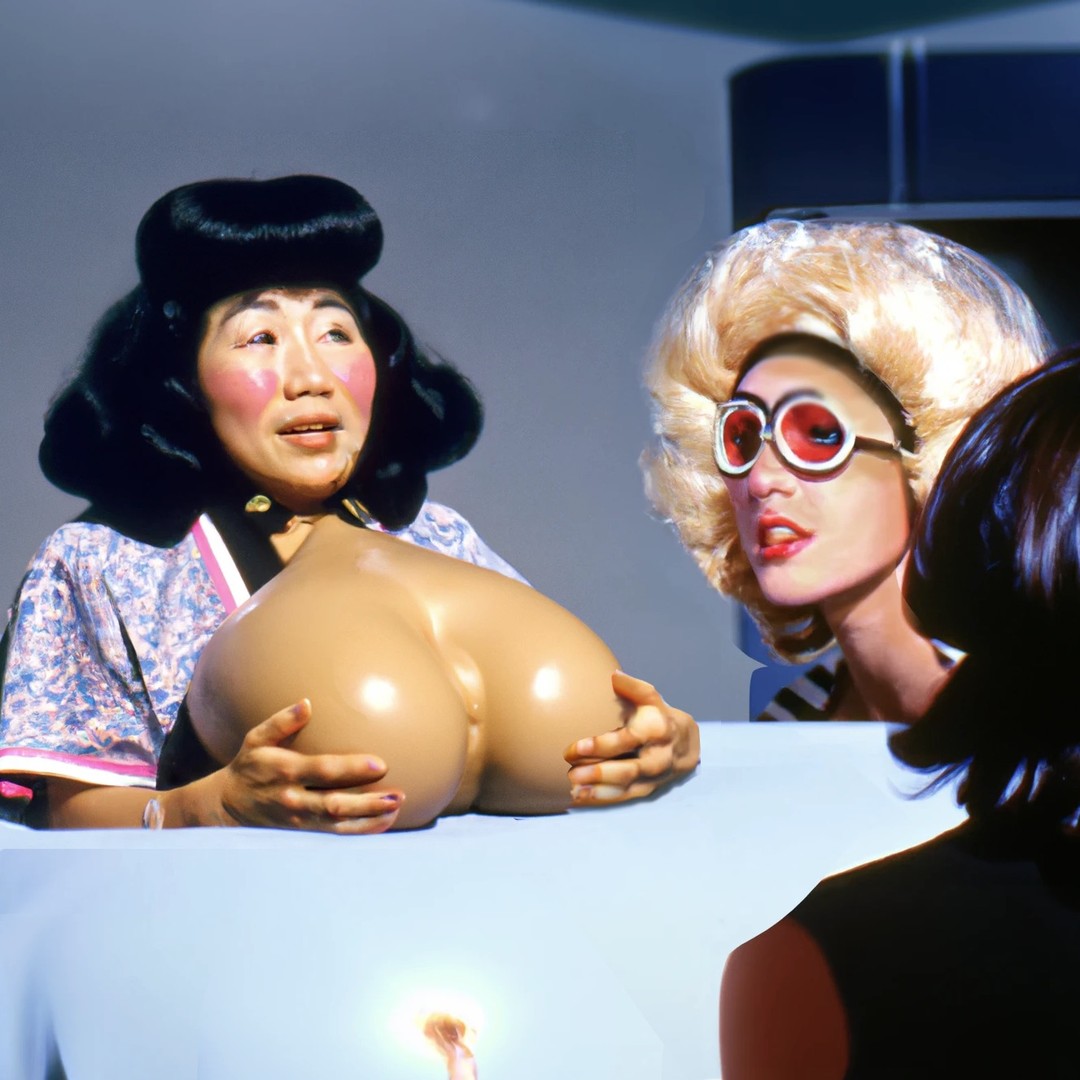
Good morning Beth! It should be pretty obvious to everyone by now that after AI’s advent “no flesh shall be spared” (allow me the emphatic expression). As a multimedia artist, how has AI impacted your practice?
Hello! I think there are two parts where AI is impacting my practice. One is in the AI itself, which I think is somewhat enabling parts of my ADHD by allowing me to quickly work through ideas without the time and labor to commit to it. I have been working with AI for over a year now.
Before DALL-E, I produced a lot of images on NightCafe, using the (now outdated) VQGAN+CLIP model, which I actually find more interesting than DALL-E. This AI abstracted the images it created in fascinating ways, and made me a bit jealous as a painter that it found a balance between figuration and abstraction through a new logic that I couldn’t achieve. It often blurred the boundary between figure and ground, that it seemed to represent ideas of things rather than the things itself and challenged the way I saw and interpreted images through my human eyes. I also find imperfection a lot more interesting than perfection, and for that reason I was hesitant to adopt DALL-E at the beginning. For that reason, I don’t find the DALL-E images interesting as painting subjects. I do think that there will be more interesting ways to integrate them into my art practice, however. The other major impact of AI for me has to do with social media, and the virality of this AI account; I’m now spending much more time managing my interactions with people than in the studio, but I’m hoping that things will level out into a nice equilibrium soon.
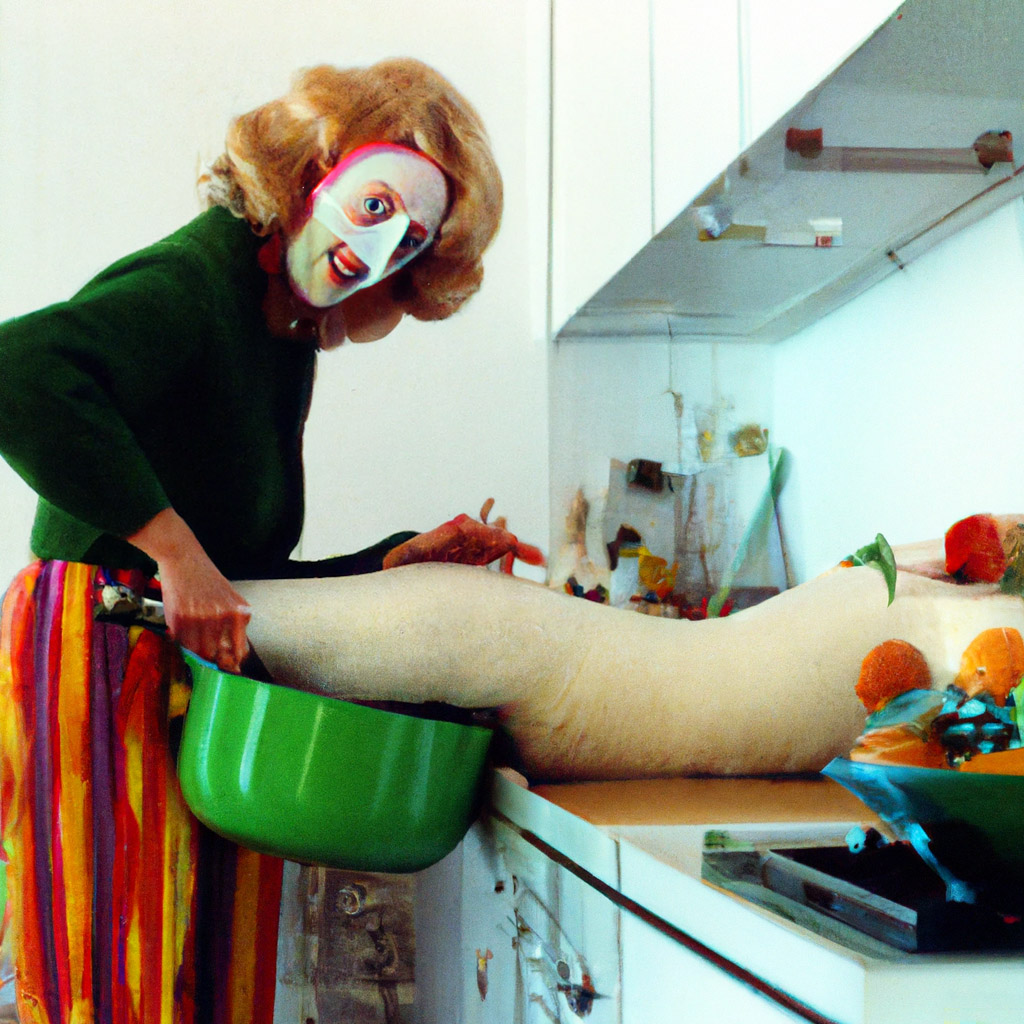
Whichever adjective we decide to recur to in order to frame your art – “weird”, “surreal”, “grotesque” – the body occupies the center of the stage. When it comes to the body, there is no degree zero in the sense Barthes describes writing degree zero: always under siege by fictional apparatuses such as the state, the nation, subjectivity and so on, the body knows no neutrality or rest. In its manipulation of the body (which always passes through its image), is AI yet another apparatus of control or is it a line of flight?
I think it’s both, which is why I see this work as both utopian and dystopian at the same time (I think that all utopias are also dystopias, but that’s another conversation). Perhaps this is why I preferred the older, “imperfect” AI and its bodily distortions, as it offered a tool for liberation against bodily conformity. I certainly place myself in the milieu of artists who use the grotesque as a strategy of resistance against gendered expectations, but I also view the body as its own barrier. When I think about technology, I think of new corporeal possibilities, where we can create extensions of our imperfect bodies, but also the technology as imperfect in itself, as it was created by humans.
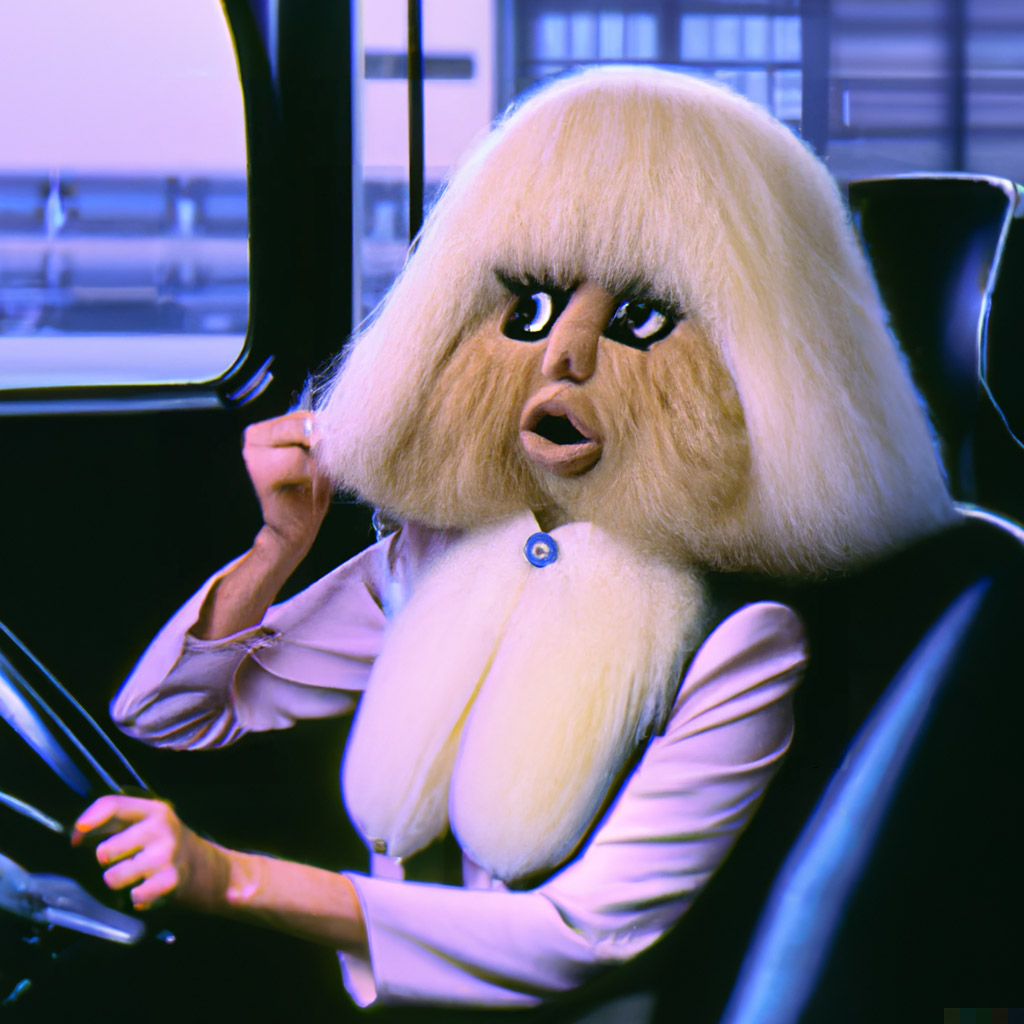
Do you view AI more as an echo chamber for your unconscious or as uncharted territory? I could also rephrase the question this way: how much unknown is there in the final visual output?
I would say it’s about 80% unknown. It’s uncharted territory, but viewed through the lens of my unconscious. There are definitely recurring themes I work with, but I really see my work with AI as a conversation with the machine. I try to give it impossible propositions to see how it interprets them, and after that, I work from that initial image. The first generation after a prompt is the biggest surprise. After that, I edit from that image, fine-tuning it with a little more intent and control.
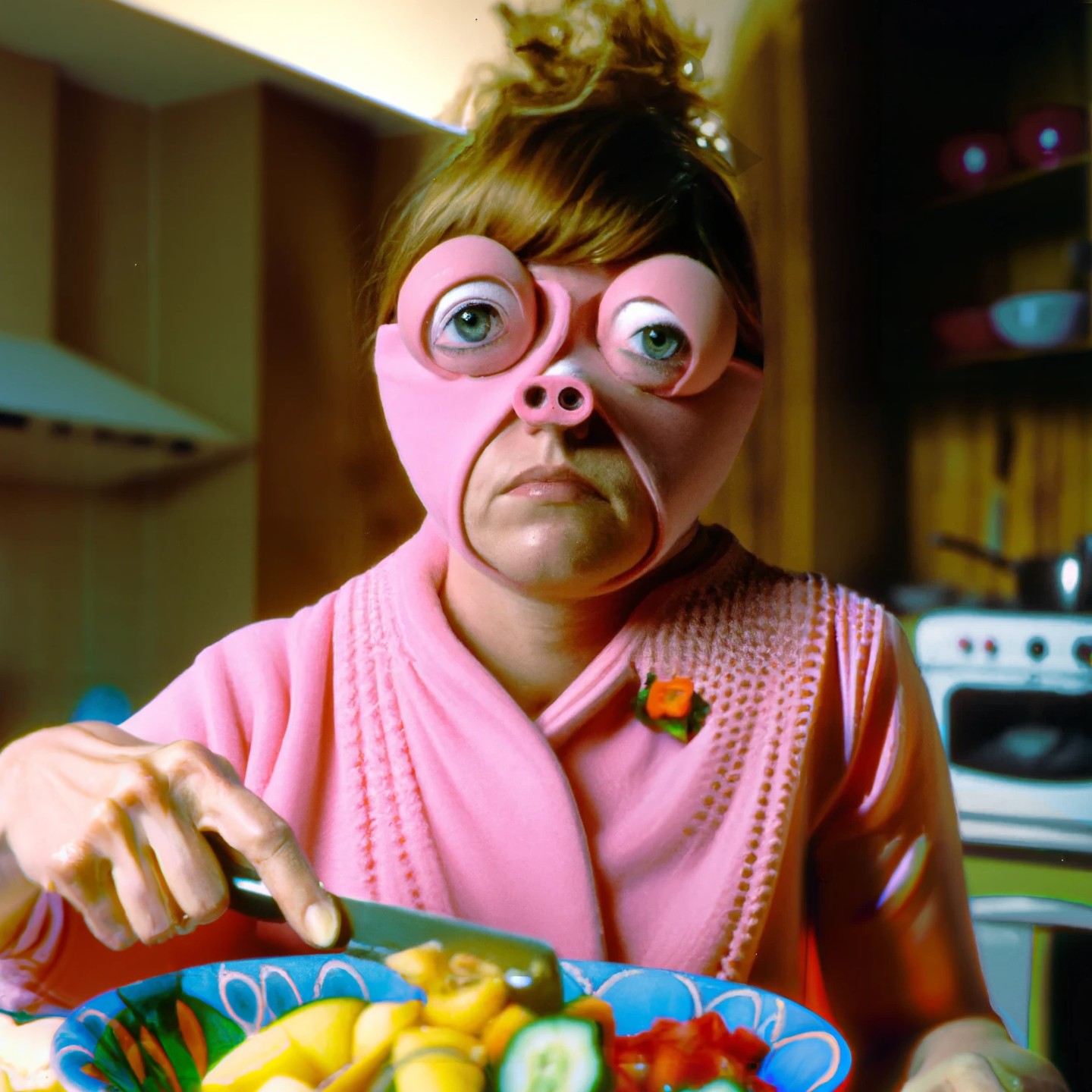
Intended or not, many of your images remind me of Cindy Sherman’s work. In particular, a good portion of her oeuvre explores womanhood and femininity as pure images, a masquerade of stereotypes pressed against the materiality of feminine bodies. Mulvey defined this as “iconography of misogyny”, in the sense that women themselves identified in these cosmetic and predatory interventions thus forcing themselves to expel every physical sign of their womanhood, acting out this fetishization of the feminine body. Are these themes you are interested in? Do you think there is a certain degree of overlapping between your work and Sherman’s one?
Although it wasn’t intentional, I definitely see parallels to Sherman’s work. Outside of this AI account, my video art practice plays with questions of self-representation and distortions of my body through technology, although those videos are more like moving paintings rather than explorations of feminine archetypes. I was initially drawn to the film still as a reference point, creating an ambiguous gesture that allowed for various interpretations. And of course, when referencing classic film, with it comes a number of tropes to play with. And for me, I’m drawn to representations of gender, the burden of conforming to conventional femininity, and using the body to rupture those conventions.
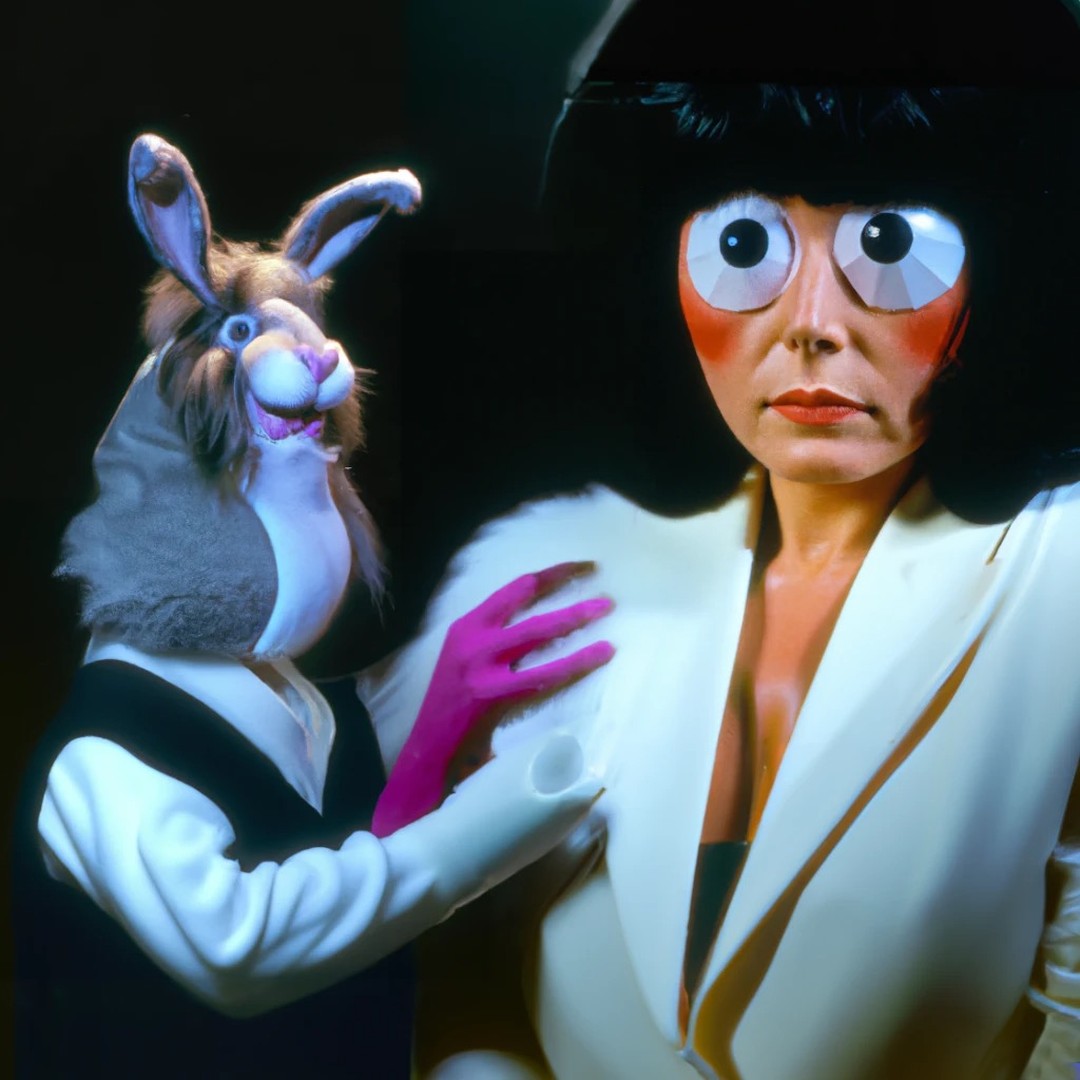
Do you ever use photos of yourself as the initial prompt?
I have! I’m interested in exploring this more. I was partially unsatisfied with the result as the AI reads the language of the photo first (the fact that it was taken on an iPhone) and translates the prompt into that visual style. I would like to work with more sophisticated lighting as well as the props that I have in my studio to create something more complex. I’ve been looking for more and more ways to tie this AI project into my primary practice, and this is one of the possible routes.
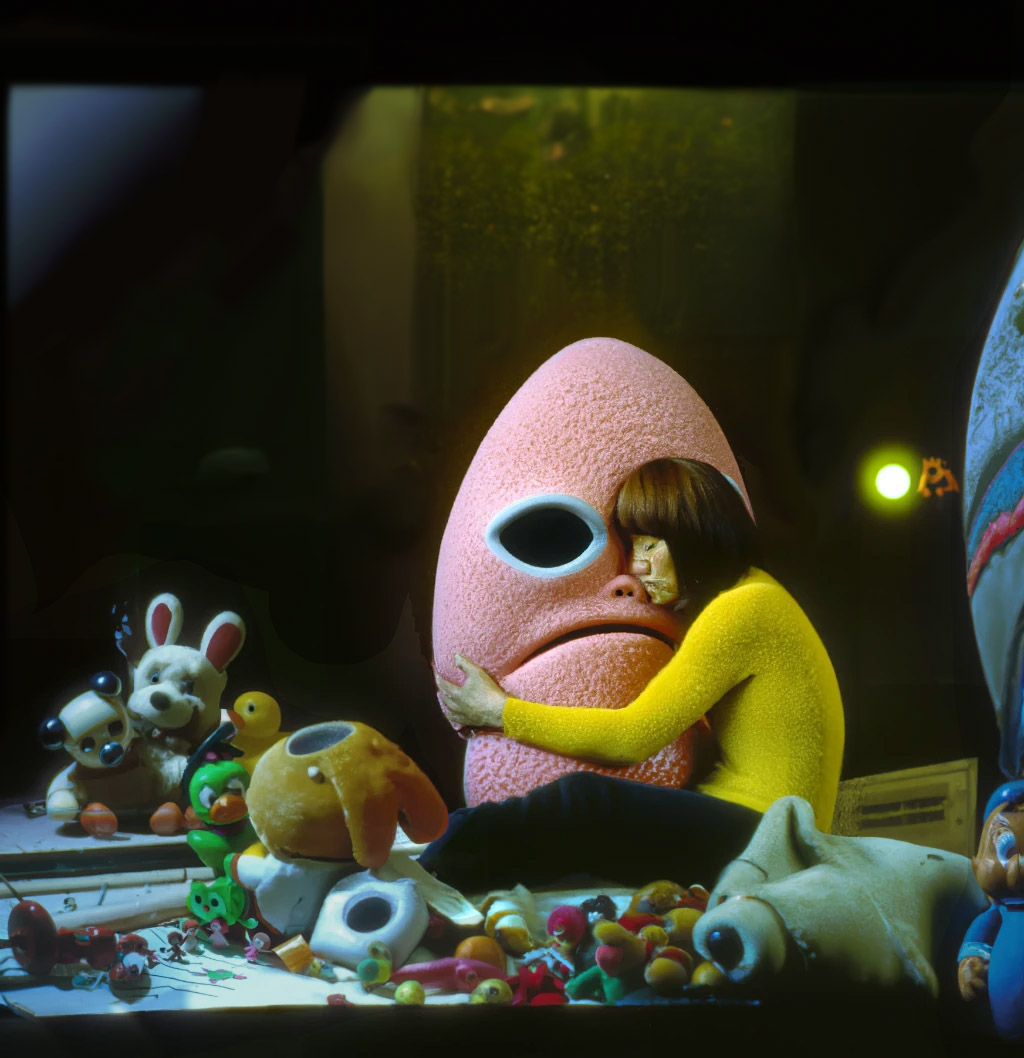
With the presumably ever increasing role played by AI in the artworld, should we also let AI be the curator of all exhibitions involving its creations?
Haha, what a thought! I say, let’s try it! I’m not sure how good a job it would do at this point, but I’m curious to see how it would put things together.
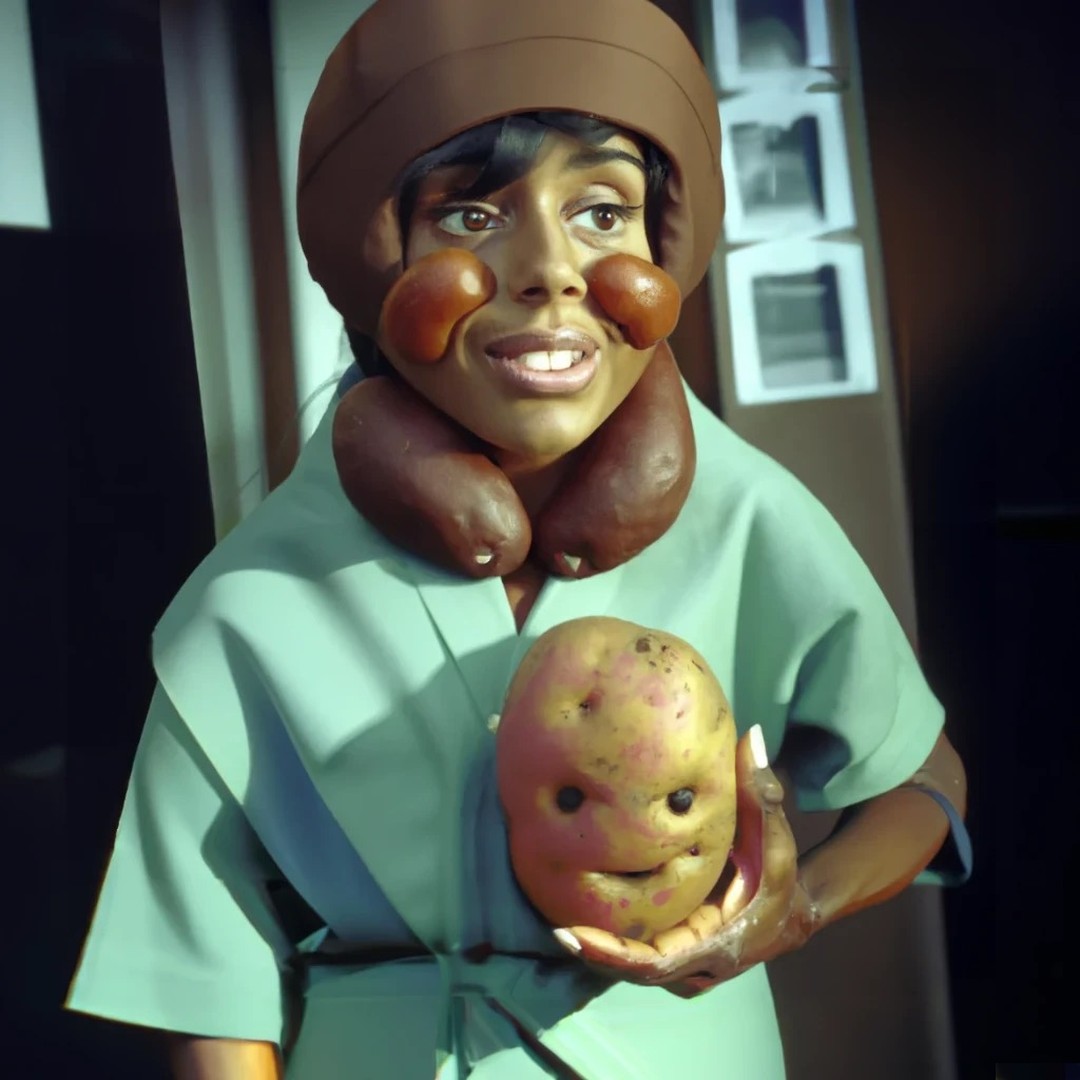
Will the creative process ever be fully automatized thanks to AI? Will it write its own prompts in the future?
It looks like it’s already starting to do that, with the new GPT chatbot. I don’t think AI will take over the entire creative process, at least not in my lifetime. I think it will migrate that process, and we’ll need to develop new creative skills to work alongside the skills of the AI. At the same time, I keep looking at art history when considering this present moment. Once photography and film became common practices, they didn’t replace painting. Painting just began to reference itself more, its form, its materiality, etc. I have a feeling we’ll see something like this as well with analogue other non-AI art forms.
